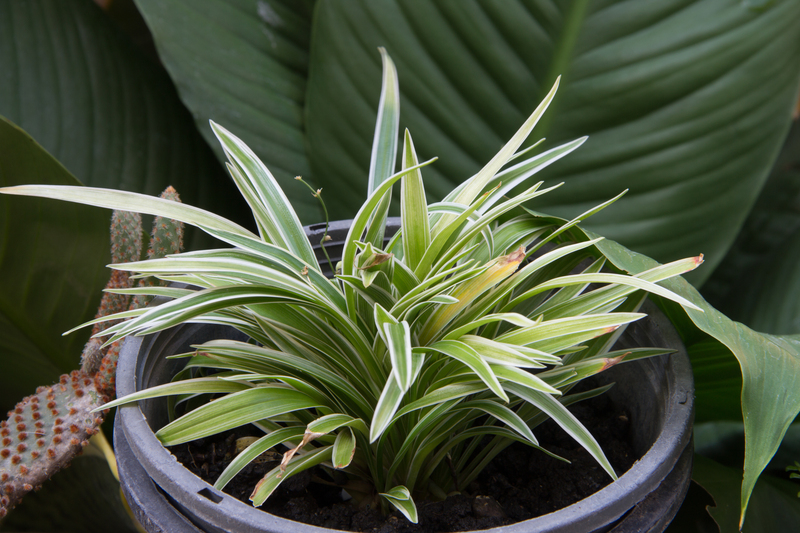Recognize Common Lawn Bugs
Posted on 17/02/2025
Having a lush, green lawn is a source of pride for many homeowners. However, keeping a lawn in impeccable condition can be a challenge, particularly when pesky insects make an appearance. Recognizing common lawn bugs early on is essential to maintaining a healthy yard. The key to efficient pest control lies in understanding which insects are harmful, which are beneficial, and the appropriate measures to address their presence.
Understanding the Importance of Lawn Pest Identification
Proper pest identification is the first step in any effective lawn care regimen. Misidentifying bugs can lead to improper treatment, which might exacerbate the problem or harm beneficial species. Not all bugs in your yard are harmful; some might actually help control the population of more destructive pests. This guide will help you recognize common lawn bugs, understand their impact, and provide tips on how to manage them.

Common Harmful Lawn Bugs
The following are some of the most common harmful insects that can be found in lawns:
Grubs
Grubs are the larvae of various beetles, such as Japanese beetles and June bugs. They have a C-shaped body, creamy white color, and are typically found in the soil. These pests feed on grass roots, which can lead to brown patches on the lawn and a spongy feel underfoot. Severe infestations can cause significant damage, making it crucial to recognize and address the issue promptly.
Chinch Bugs
Chinch bugs are tiny, black insects with a characteristic white X-shaped pattern on their backs. They feed on grass by sucking out the juices, resulting in yellow and brown patches. These patches often start small but can quickly expand, potentially killing large areas of your lawn if not treated. Chinch bugs are especially problematic in hot, dry weather.
Armyworms
Armyworms are caterpillars that can cause severe damage to lawns. They are generally green, brown, or yellow with stripes along their sides. Armyworms get their name because they move in large numbers, resembling an army. They feed on grass blades, creating bare spots that can expand rapidly. These pests are more active at night, making them harder to detect during the day.
Billbugs
Billbugs are beetles that can be particularly destructive to certain types of grass, such as Kentucky bluegrass. The larvae, which are small and cream-colored, burrow into the stems and roots of grass, causing it to wilt and die. Adult billbugs, which are black or brown and have a distinctive snout, can also damage the grass by chewing on it.
Beneficial Lawn Bugs to Recognize
Not all bugs are detrimental to your lawn. Some can actually help keep harmful pests in check:
Lacewings
Lacewings are slender, green or brown insects with delicate wings that resemble lace. They prey on a variety of harmful pests, including aphids, caterpillars, and other small insects. Having lacewings in your lawn can be a natural form of pest control.
Ladybugs
Ladybugs are perhaps the most well-known beneficial insects. They are red or orange with black spots and are voracious predators of aphids, mites, and other soft-bodied insects. Encouraging ladybugs to take up residence in your garden can significantly reduce the number of harmful pests.
Ground Beetles
Ground beetles are another type of beneficial insect. These nocturnal predators are often black or metallic and feed on soil-dwelling pests like slugs, snails, and other larvae. Their presence can contribute to a healthier lawn ecosystem.
Effective Strategies for Lawn Bug Control
Maintaining a healthy lawn requires a multi-faceted approach that can include both natural and chemical methods. Here are some strategies to help control lawn pests effectively:
Cultural Practices
Adopting good cultural practices can go a long way in preventing pest infestations. Regular mowing, watering, and fertilizing help maintain the health of the grass, making it more resistant to pests. Aerating the soil can also improve root health and drainage, creating an environment that is less conducive to pests.
Natural Predators
Introducing or encouraging natural predators like the beneficial insects listed above can help manage pest populations. You can attract these beneficial insects by planting a variety of flowers and maintaining a diverse landscape.
Biological Controls
Biological controls involve using natural enemies or pathogens to control pest populations. For example, nematodes are microscopic worms that can be effective against grubs. They can be applied to the soil and will seek out and kill the grubs.
Chemical Treatments
When natural and cultural methods are insufficient, chemical treatments may be necessary. It is essential to choose the appropriate pesticide for the specific pest you are dealing with. Always read the label and follow the instructions carefully to avoid harming beneficial insects and other wildlife.

Regular Monitoring and Maintenance
One of the best ways to manage lawn pests is to regularly monitor your lawn for any signs of trouble. Early detection can make a significant difference in the success of treatment methods. Look for discolored patches, check under the soil surface for grubs, and keep an eye out for any unusual insect activity.
Maintaining a detailed lawn care calendar can also help you stay on top of necessary tasks like watering, fertilizing, and aerating. Regular maintenance can reduce the chances of a pest infestation taking hold.
Conclusion
In summary, recognizing common lawn bugs is crucial for maintaining a healthy, green lawn. By learning to identify both harmful and beneficial insects, you can implement more effective pest control strategies. Employing a mix of cultural practices, natural predators, biological controls, and, if necessary, chemical treatments will help you manage pests while minimizing the impact on beneficial insects and the environment.
Taking the time to understand the various insects that inhabit your lawn can save you a lot of trouble in the long run. Not only will you be better equipped to handle infestations, but you'll also be able to foster a more balanced and healthy ecosystem in your yard. Regular monitoring and maintenance are key components of a successful lawn care regimen. Keep an eye out for any signs of trouble, and act promptly to address them. With the right knowledge and tools, you can enjoy a beautiful, pest-free lawn all year round.



